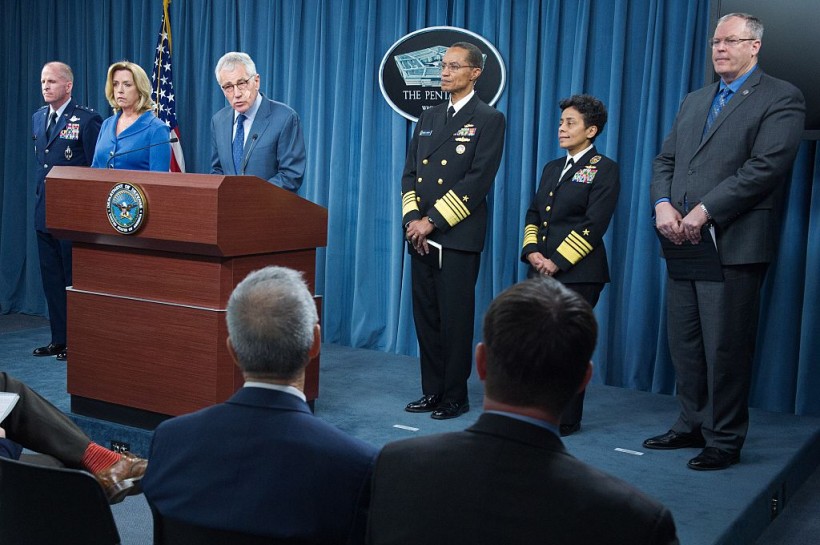
(Photo : PAUL J. RICHARDS/AFP via Getty Images)
As tension rises between US and Russia and China, the US Strategic Command sees the need to devise an updated deterrent plan.
US Strategic Command (STRATCOM) explains the need for an updated deterrence as events play out with Moscow and Beijing. The conflict in Ukraine and the Indo-Pacific theatre shows tensions are rising sharply. All these changes need a reassessment said the high command, as the US is scrambling.
STRATCOM To Formulate New Strategy
As the situation in Ukraine evolved this winter, the STRATCOM grew aware of these shifts and obtained a commander's assessment of what would be needed to prevent nuclear war in the real world, reported Sputnik News.
The US is developing a new nuclear deterrence theory that calls for simultaneous confrontation with Russia and China, said the chief commander of the country's nuclear arsenal, the Defense One news website published on Thursday.
At the Space and Missile Defense Symposium in Alabama, STRATCOM chief Navy Adm. Chas Richard said that more Americans must concentrate on measures to prevent nuclear war. The agency is responding, he continued, in a way that calls for greater attention since the alleged threats from China and Russia are so dissimilar this year.
According to the report, several nuclear command post teams have been flying missions on modified Boeing 707s called the E-6 Mercury "Looking Glass" aircraft.
In an attempt to control and manage Russian activities, especially in Ukraine, military officials attempted to draw the other combatant commands into alignment.
Read Also: Kim Jong-un Net Worth 2022: How Wealthy Is North Korea's Leader?
'Mutually Assure Destruction' Theory Not Enough
This widely recognized hypothesis of preventing a nuclear war (MAD), which would spell Armageddon for all combatants, calls for changes to be made by the military establishment. It has prevented a possible conflict between the USSR and NATO for almost 75 years.
Due partly to Russian President Vladimir Putin, the US High Military Command will permit changes to MAD. He issued a firm warning to the US-led NATO to refrain from interfering or face the consequences.
Most US military officers allegedly do not anticipate using all of their nuclear arsenals; instead, they are worried that Russia might begin a limited nuclear conflict that they have long feared by using smaller payloads on specific targets.
Existing threats from Russia have made the organization make the changes needed to deal with them. According to Admiral Richard, these plans are solely for a two-way party version, citing Wion.
This disregards US worries about nuclear weapons delivered by Chinese hypersonic technology and Beijing's aspirations for Taiwan.
Lessons from the West's management of the Ukrainian conflict have shown China the possibility for China and Russia to merge their aspirations in a way that would expose the US to multiple nuclear threats.
Despite all the concerns about Russia or China using nuclear weapons for the first time, the US remains the only country to use them against people.
The US Air Force carried out the first nuclear attack on Japan in August 1945, using B-29 long-range bombers to obliterate the Japanese cities of Hiroshima and Nagasaki. The atomic bombing resulted in 140,000 deaths in Hiroshima and 74,000 in Nagasaki, where most of the victims were civilians.
Related Article: White House Attempts To Win Over Africa After Successful Inroads by Beijing and Moscow








